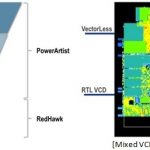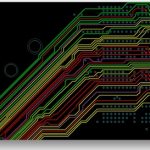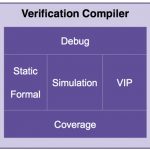Success in a business with extended design-in cycles may look easy. In reality, there is a delicate balance between many factors. Some come to mind immediately: developing and releasing a good product in the first place; winning and keeping the right customers, not too few or too many; balancing investment between support and R&D; and constantly evaluating the landscape for disruptive change and newer ideas.
The semiconductor intellectual property business can test the mettle of even seasoned industry veterans. After all, an IP vendor only makes one piece of a solution; success means helping a customer make something complete that ships in volume with the idea inside. The bulk of the credit often goes unrecognized by other potential customers because of NDAs and confidentiality.
There is perhaps no greater endorsement for a company and their technology than when a superpower swoops in and buys the rights to the mainline IP by acquiring all or part of the firm. When our SemiWiki staff last visited one of these cases at the end October, the burning question was: How does Arteris move forward with their business after selling key network-on-chip technology (but not other customer royalties, retaining sales/marketing rights) and most of their engineering intellectual capital to Qualcomm?
I’ll just say that Qualcomm can be very persuasive, and it was probably the tech version of the “offer they can’t refuse” sans firearms but including bags of cash. Both Eric Esteve and Paul McLellan previously analyzed the highlights of this rather unique transfer agreement. Each touched on the notion that Arteris would likely take the cash and reinvest, adding new engineering talent in moving forward with their NoC vision.
Eric – Qualcomm-Arteris deal: high cost of differentiation
Paul – Qualcomm and Arteris: The CEO Speaks
Talent, indeed. Arteris has reached into the well and come out with three prominent names from a cross-section of the industry, filling key leadership positions.
- Craig Forrest joins as CTO, and we only need one line in his bio to understand his fit: “… he led and created the semiconductor design groups responsible for the Application Processors in the first three generations of [Apple]iPhone products.” (Daniel Payne recently shared background on the A4, A5, and A6.)
- David Parry catches on as VP of Engineering, bringing three decades of experience from Solarflare Communications and SGI. His bio cites extensive experience in cache coherency, and we can infer he also brings in-depth understanding of issues like QoS and high-bandwidth network traffic.
- Benoit de Lescure is an interesting find, coming over as Director of Applications Engineering, lifted from the arms of Sonics where he held product management and applications engineering roles. He also brings perspective into Europe, with background including time at Thomson.
You can read more about these individuals, and thoughts from Arteris CEO Charlie Janac, in the official press release.
Arteris Recruits World-Class Engineering Leadership Team
The old saying that comes to mind with any organizational press release like this is “the proof is in the pudding”. The big news will be the next-generation Arteris NoC release, and subsequent design wins. However, they have kept their first (public) post-transform commitment, reaching into the likes of Apple and their key competitor for new engineering leadership and ideas. I suspect it won’t be too long before the next steps are seen.
lang: en_US






